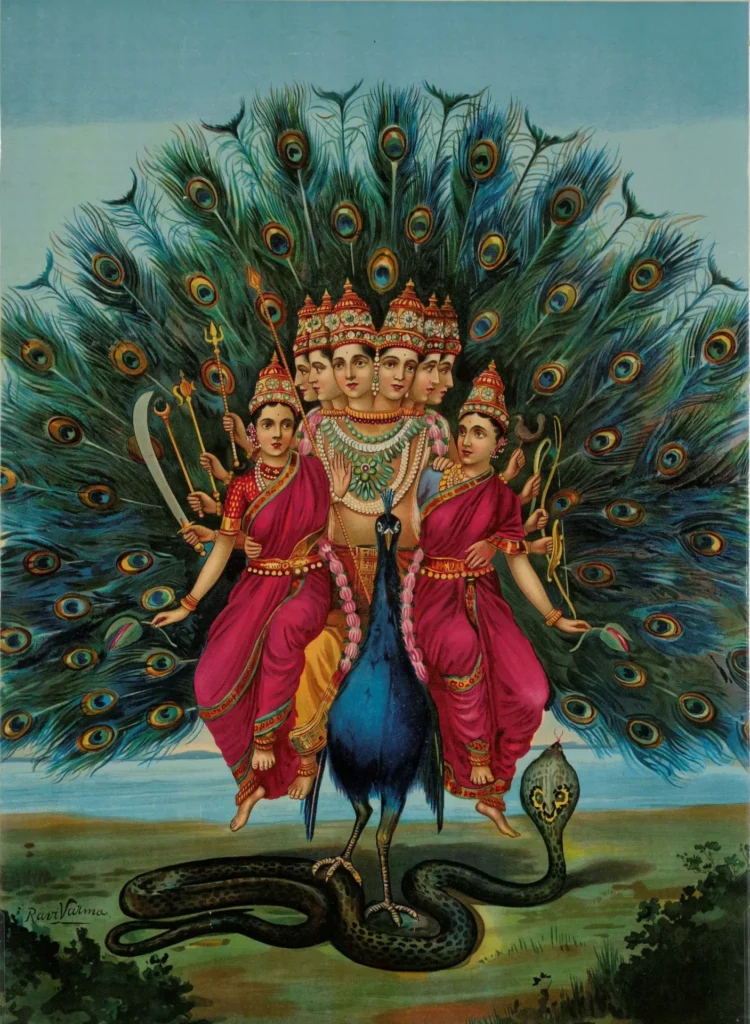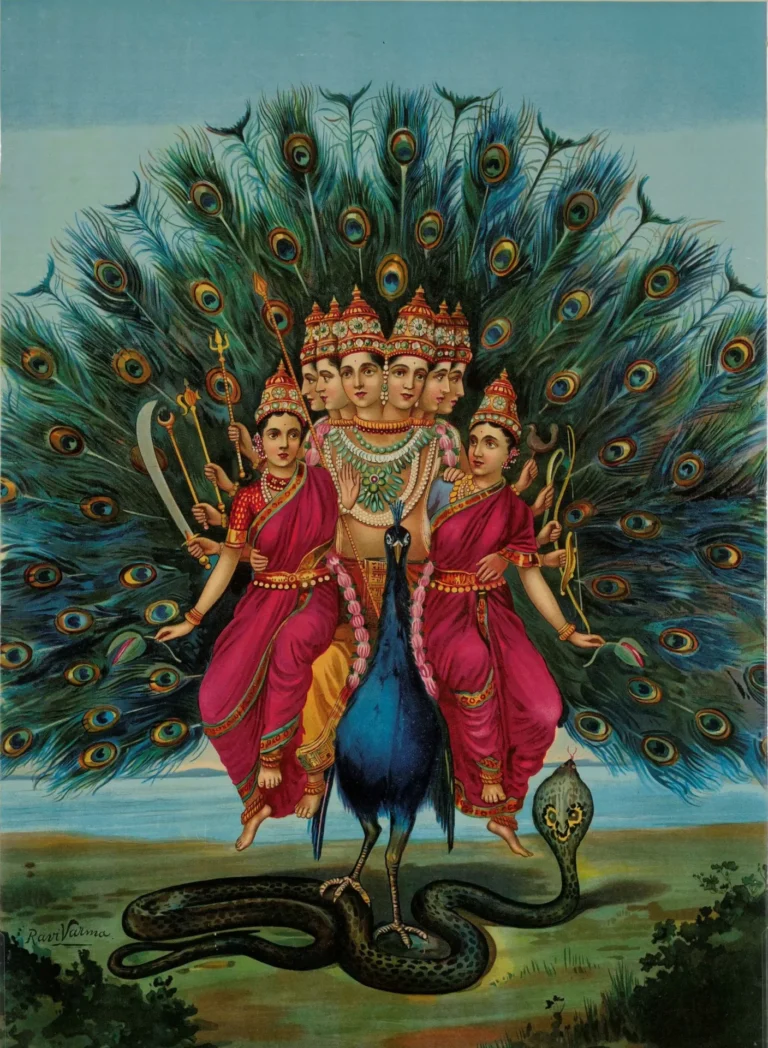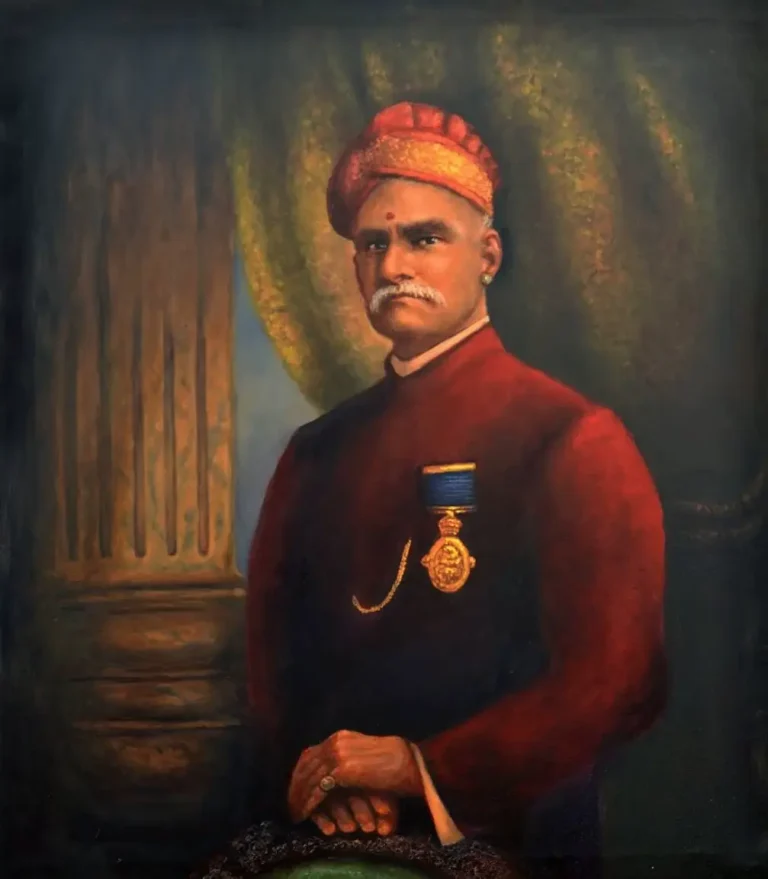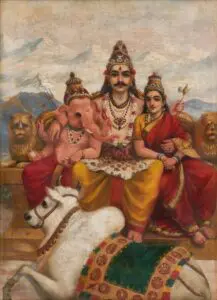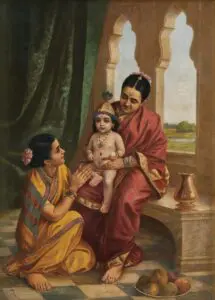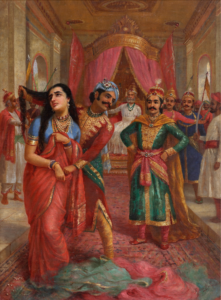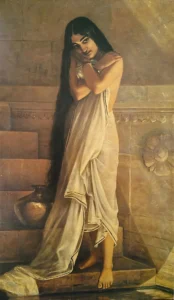Murugan
Sri Shanmukha Subrahmanya Swami is a captivating painting by Raja Ravi Varma that showcases Murugan, the Hindu god of war, on his majestic peacock mount, accompanied by his two wives, Devasena and Valli. The artwork beautifully merges Indian mythology with European artistic style, reflecting vibrant colors and realistic details. This iconic piece stands as an embodiment of the artist's skill in representing divine figures with a lifelike quality, inviting viewers to appreciate the rich narrative and cultural significance it encapsulates.
Late 19th Century
About the Artwork
Raja Ravi Varma's 'Sri Shanmukha Subrahmanya Swami' not only highlights the intricate beauty of the Hindu god Murugan but also embodies the nuanced storytelling typical of Indian art. The painting narrates the mythological tale of Murugan's birth, where he is born from the fiery essence of his mother Parvati, symbolizing strength and divinity. His depiction riding a peacock, a symbol of pride and beauty, enhances the ethereal presence of the god. The addition of his wives, Devasena and Valli, further deepens the portrayal of familial bonds and divine love. Varma's unique ability to bring together Indian themes with European techniques changed the landscape of Indian art in the late 19th century, and this painting remains a testament to his genius.
Did You Know
In Hindu mythology, Murugan, also known as Kartikeya, was born from the divine sparks produced by Parvati’s third eye. These six sparks were transformed into his six-headed form, symbolizing different facets of his personality and divine power.
Raja Ravi Varma was inspired by European academic art styles, which influenced his approach to composition, perspective, and realism. He integrated these techniques seamlessly into his depictions of Indian deities, which was groundbreaking at the time.
The original artwork of ‘Sri Shanmukha Subrahmanya Swami’ by Raja Ravi Varma is recognized as being in the public domain, allowing for widespread reproduction. This has enabled greater access and appreciation of Varma’s work across different platforms worldwide.




